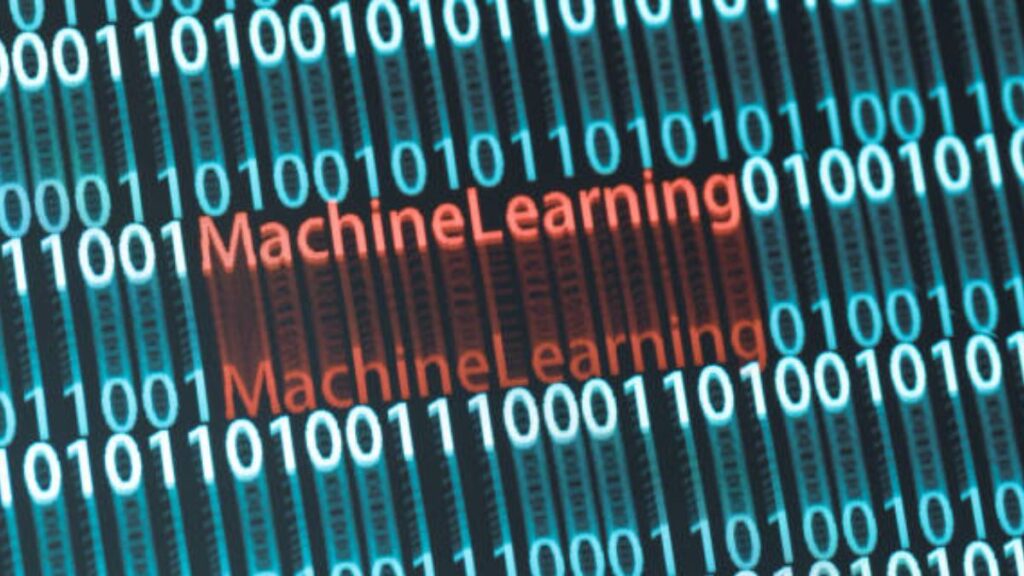Ready to Master Machine Learning?
Have you ever wondered how Netflix recommends your next binge-watch or how Google instantly translates text? The answer is often Machine Learning (ML)—a field of computer science that’s transforming every industry. Many people are curious, but often overwhelmed by the technical jargon. You want to understand this powerful technology, but need a clear, friendly roadmap. This comprehensive guide will simplify ML, covering exactly what it is, its main types, how it’s applied in the real world, and the critical ethical questions you need to know. Get ready to start your Learning journey into the future of AI!
What is Machine Learning Really?
At its core, Machine Learning is a subset of Artificial Intelligence (AI) that focuses on building systems. These systems learn from data, identify patterns, and make decisions with minimal human intervention. Instead of being explicitly programmed to perform a task, ML algorithms learn from large datasets, improving their performance over time.
Think of it this way: instead of writing millions of lines of code detailing every possible scenario, you give the computer a huge set of examples and let it figure out the rules for itself. This capability to learn autonomously is what makes ML so revolutionary. It’s what drives innovation across sectors.
In essence, ML is the science of teaching computers to learn without being explicitly programmed.
The Main Types of Machine Learning
Understanding the different categories is crucial to grasping how ML models are built and used. Each type is suited for specific tasks, depending on the nature of the data and the desired output. We will break down the three fundamental learning paradigms.
Supervised Learning: Learning from Examples
Supervised Learning is the most common type. In this method, the algorithm is trained on a labeled dataset. A labeled dataset means that the input data already has the correct “answer” or output associated with it.
The model learns to map the input to the output, making predictions on new, unseen data. It’s like a student learning from a teacher: the teacher (labels) shows the correct answers until the student can answer on their own.
Primary use cases for Supervised Learning:
- Classification: Predicting a category, like whether an email is spam or not spam.
- Regression: Predicting a continuous value, such as house prices based on features like size and location.
Unsupervised Learning: Finding Hidden Patterns
In contrast, Unsupervised Learning involves training models on unlabeled data. The system must find hidden patterns, structures, and relationships within the data on its own, without any prior guidance.
This approach is powerful for exploring large datasets where human intuition might miss subtle connections. It allows for genuine discovery and data reduction.
Key techniques in Unsupervised Learning:
- Clustering: Grouping similar data points together, often used for market segmentation to identify different customer groups.
- Association: Discovering rules that describe large portions of the data, like identifying which products are often bought together (e.g., bread and milk).
Reinforcement Learning: Learning by Doing
Reinforcement Learning (RL) is a distinct approach inspired by behavioral psychology. An agent learns to make decisions by performing actions in an environment to maximize a cumulative reward. There is no large dataset; the agent learns through trial and error.
The agent receives a positive reward for good actions and a penalty for bad ones. It learns an optimal policy—a sequence of actions that leads to the best possible outcome. This is the AI that powers complex games and controls autonomous systems.
Common applications of RL:
- Training robots to perform complex physical tasks.
- Developing AI for board games like Go and Chess, and video games.
- Optimizing resource management in data centers.
Real-World Applications That Use ML
Machine Learning is not just theoretical; it’s integrated into our daily lives, often in ways we don’t even realize. The rapid advancement in computing power and data availability means ML is solving increasingly complex problems. Let’s look at some key sectors benefiting from this technology.
Healthcare and Medicine
ML models are revolutionizing diagnostics and drug discovery. They can analyze medical images (like X-rays or MRIs) with high accuracy, often faster than human experts, to detect diseases like cancer early.
- Diagnostic Tools: Identifying subtle indicators of diseases years before symptoms appear.
- Personalized Medicine: Predicting how a patient will respond to specific treatments based on their genetic profile.
Financial Services
From fraud detection to algorithmic trading, ML is indispensable in finance. Models rapidly process transactions to spot anomalies that could indicate fraudulent activity, saving institutions millions.
- Credit Scoring: Creating more accurate and dynamic assessments of loan applicants’ risk.
- Algorithmic Trading: Executing trades at optimal times based on market prediction models.
Natural Language Processing (NLP)
NLP is a field where ML algorithms enable computers to understand, interpret, and generate human language. This has led to powerful tools we use constantly.
- Virtual Assistants: Powering devices like Siri and Alexa to understand spoken commands.
- Machine Translation: Providing near-instantaneous translation services between dozens of languages.
The Ethical Challenges of AI and ML
As ML systems become more autonomous and influential, the ethical considerations surrounding their use are becoming paramount. It is essential that we address these challenges proactively to ensure a fair and responsible deployment of AI.
Bias and Fairness
A major concern is algorithmic bias. If the data used to train an ML model reflects existing societal biases (e.g., racial, gender, or economic), the model will learn and perpetuate those same biases, often leading to discriminatory outcomes.
For example, a hiring algorithm trained on historical data might unfairly screen out qualified candidates from underrepresented groups if that group was underrepresented in the past. Addressing bias requires careful data curation and algorithmic auditing.
Transparency and Explainability (XAI)
Many complex ML models, particularly deep neural networks, are often called “black boxes” because it is difficult to understand how they arrived at a specific decision. This lack of transparency is problematic when models are used for high-stakes decisions like criminal justice or loan applications.
Explainable AI (XAI) is a field dedicated to creating models that can articulate their decision-making process in a way that humans can understand, building trust and accountability.
Data Privacy and Security
ML models are data-hungry. The collection and use of vast amounts of personal data raise significant privacy concerns. Strong regulations and anonymization techniques are needed to protect user information from misuse or breaches.
- Differential Privacy: Techniques that add noise to data to protect individual identities while still allowing the data to be used for model training.
Recommended Apps for Learning ML and Data Science
As you continue your Learning journey in Machine Learning and Data Science, utilizing the right tools is key. We at Guia de Apps recommend the following applications to help you practice, code, and stay updated:
- Grasshopper: While focused on general coding, this Google-developed app is fantastic for absolute beginners to learn the foundational programming concepts (using JavaScript) required for Python and ML.
- Jupyter/Colab (via mobile browser or dedicated app if available): The notebook environment is the industry standard for data science. Use the Colab app or a mobile browser to run and experiment with Python ML code directly on your phone or tablet.
- DataCamp/Coursera: These Learning platforms offer dedicated mobile apps. They provide structured courses, guided projects, and quizzes on ML algorithms, deep learning, and practical applications in various programming languages.
Embrace the Future of Learning
Machine Learning is undoubtedly one of the most transformative technologies of our age. You now have a clear understanding of what ML is, how its different types (Supervised, Unsupervised, Reinforcement) function, its powerful applications across sectors, and the essential ethical dialogue surrounding its use. The world of AI is moving fast, and continuous Learning is the only way to keep pace. Don’t let complexity be a barrier.
Start Coding Today!
Ready to apply your new knowledge? Download one of the recommended data science Learning apps today and start building your first ML model to truly grasp the power of this technology!



